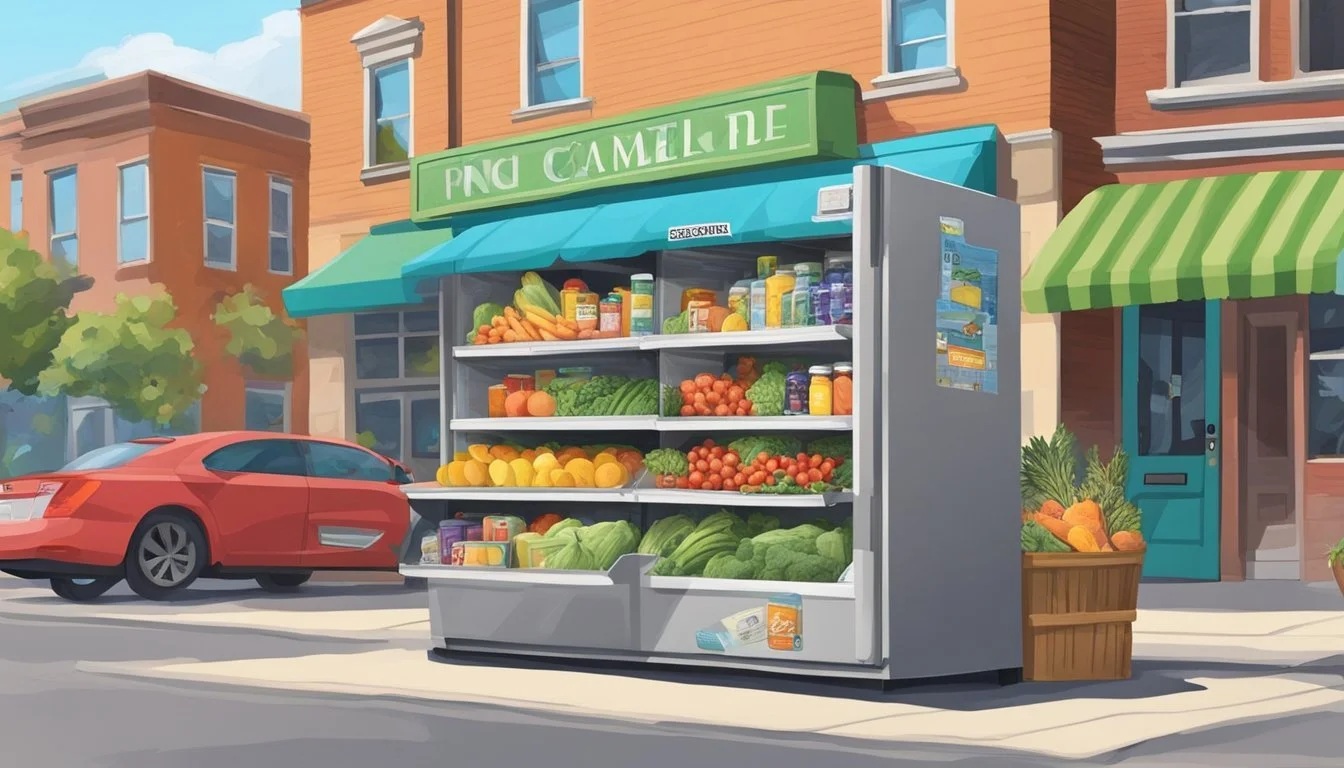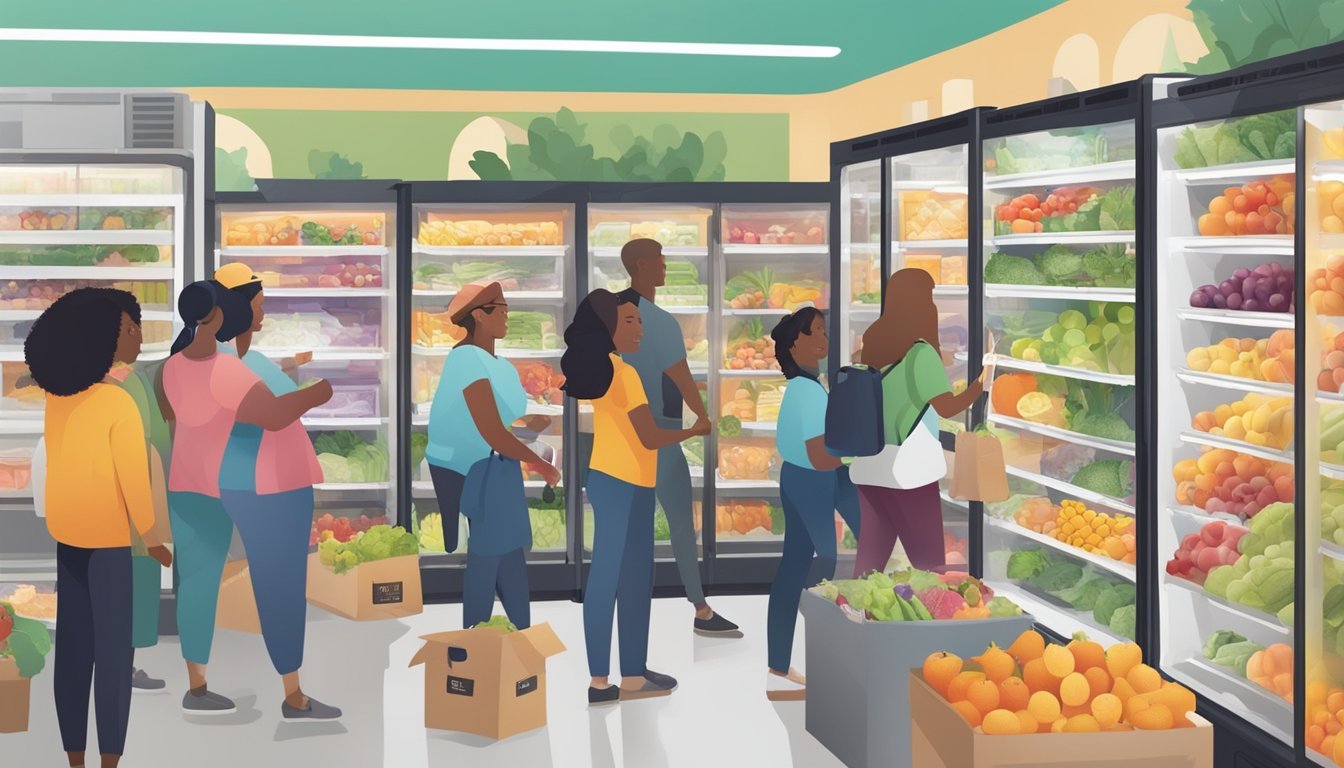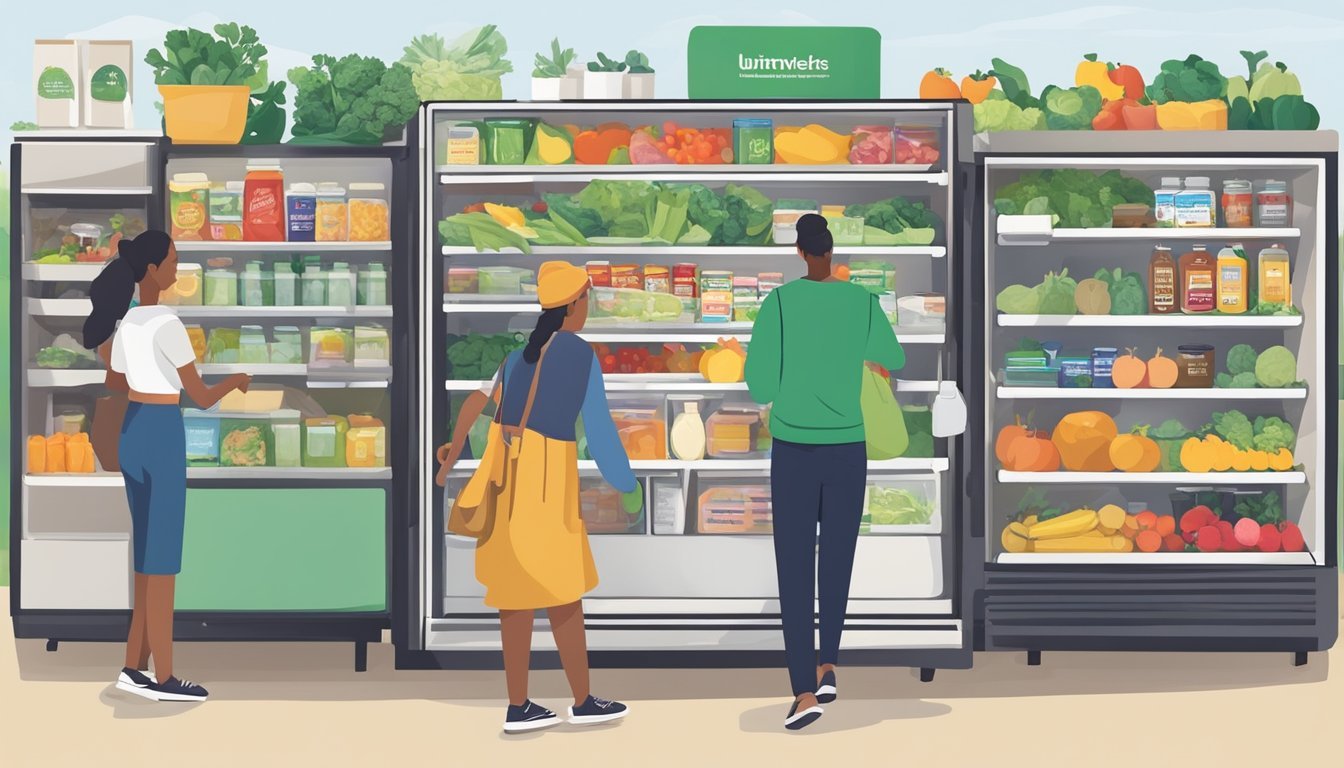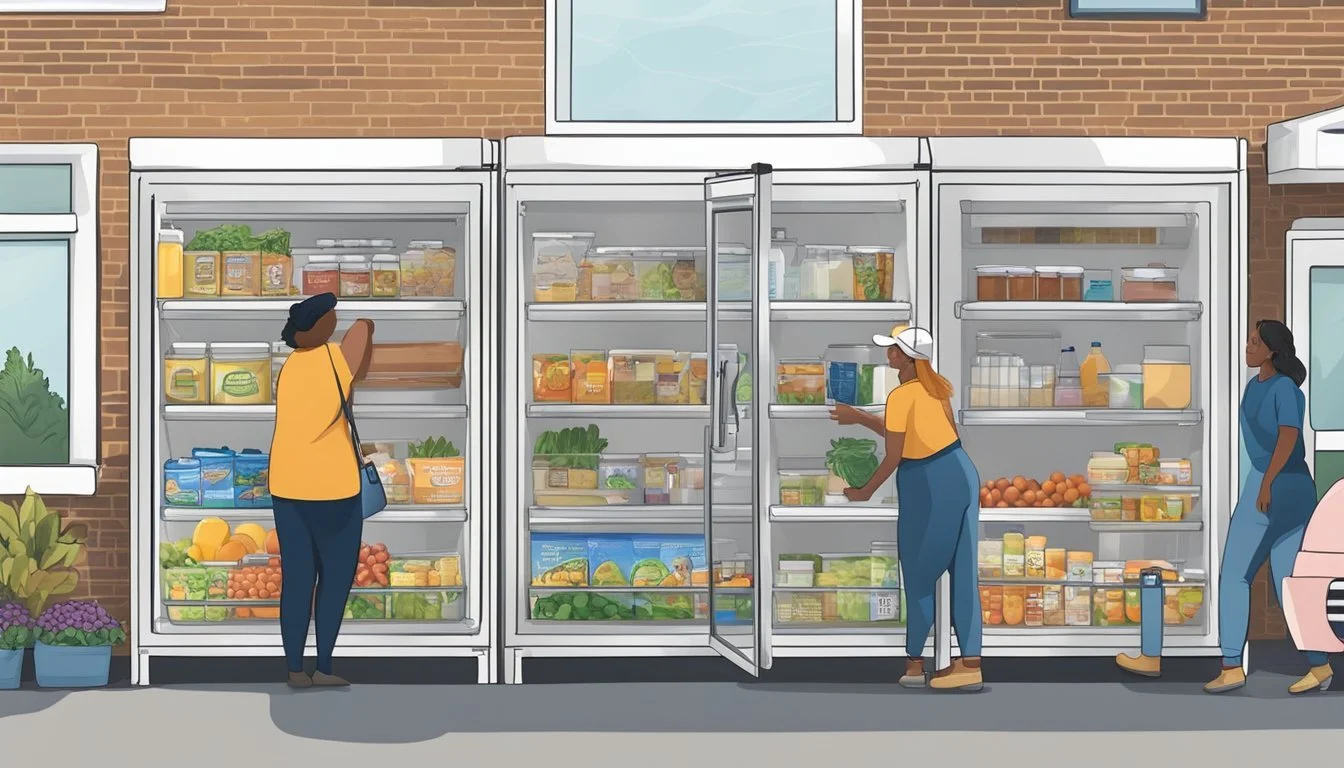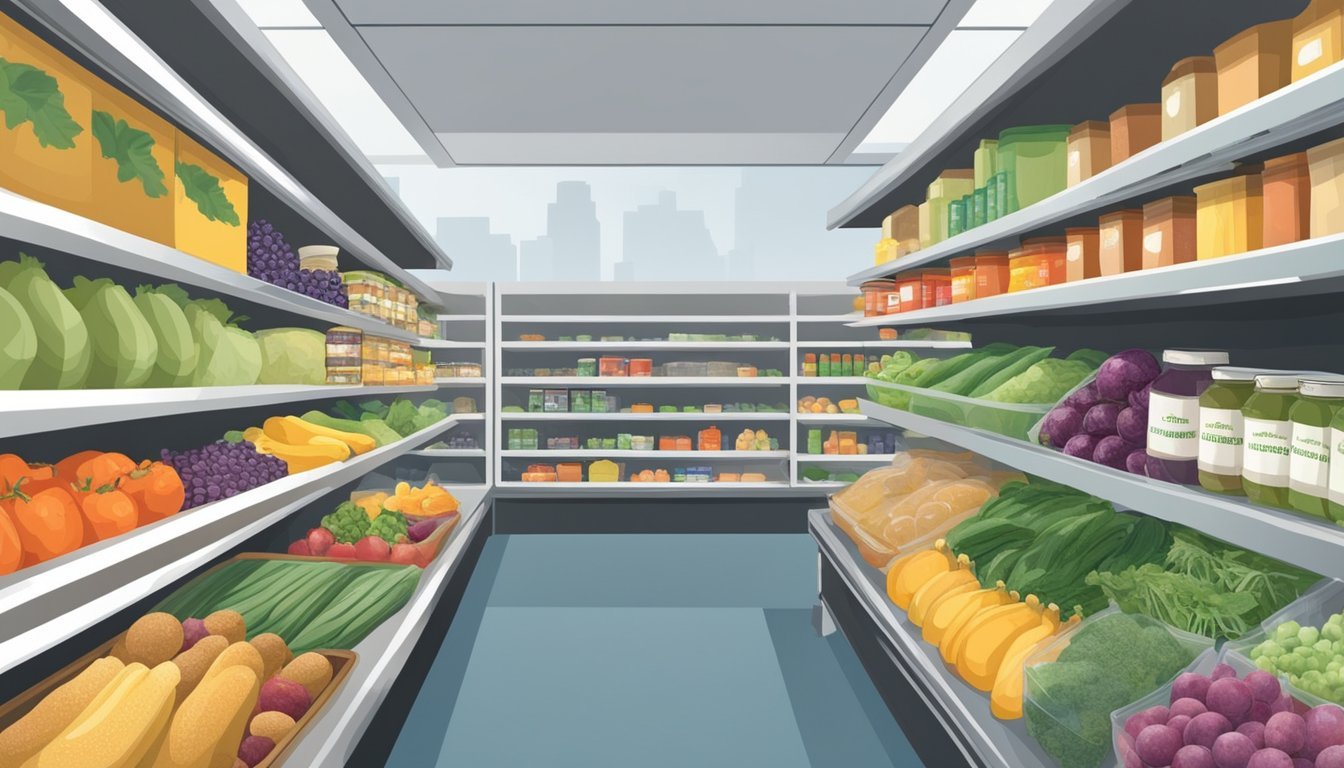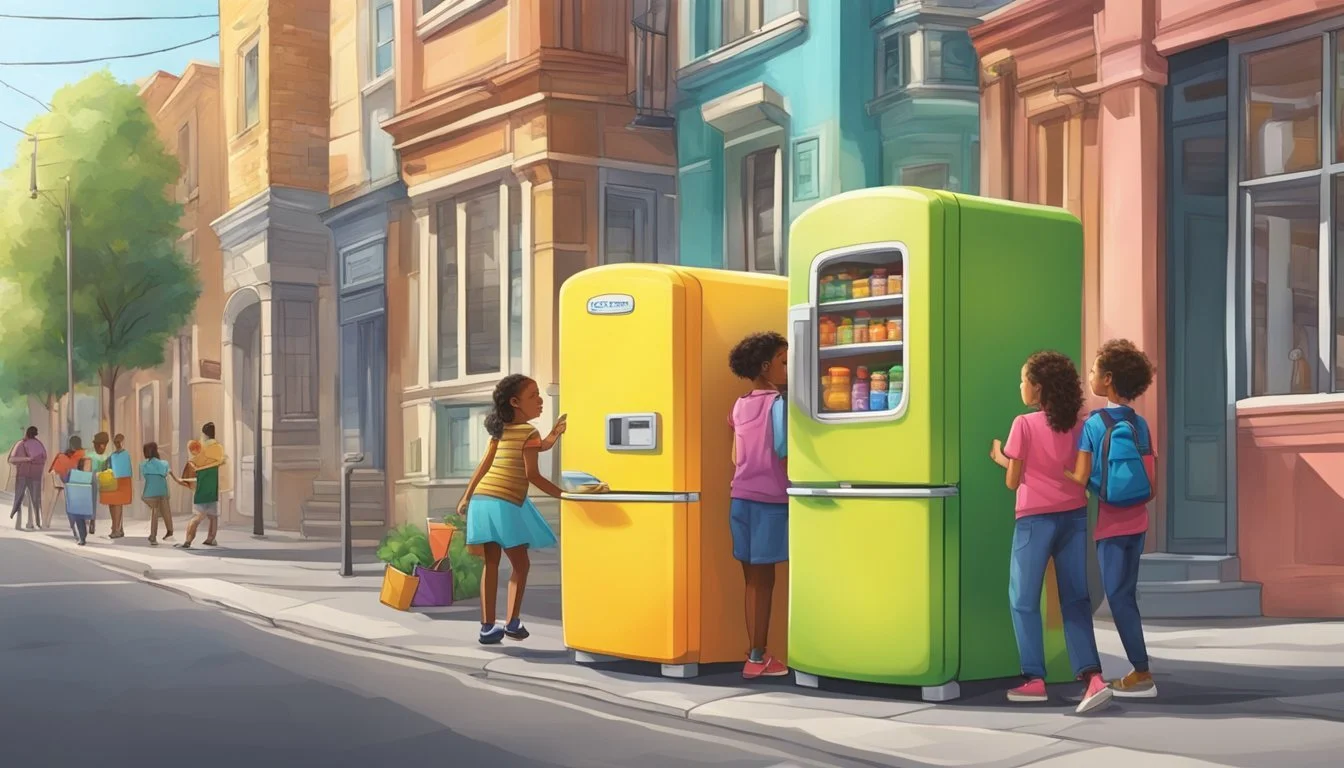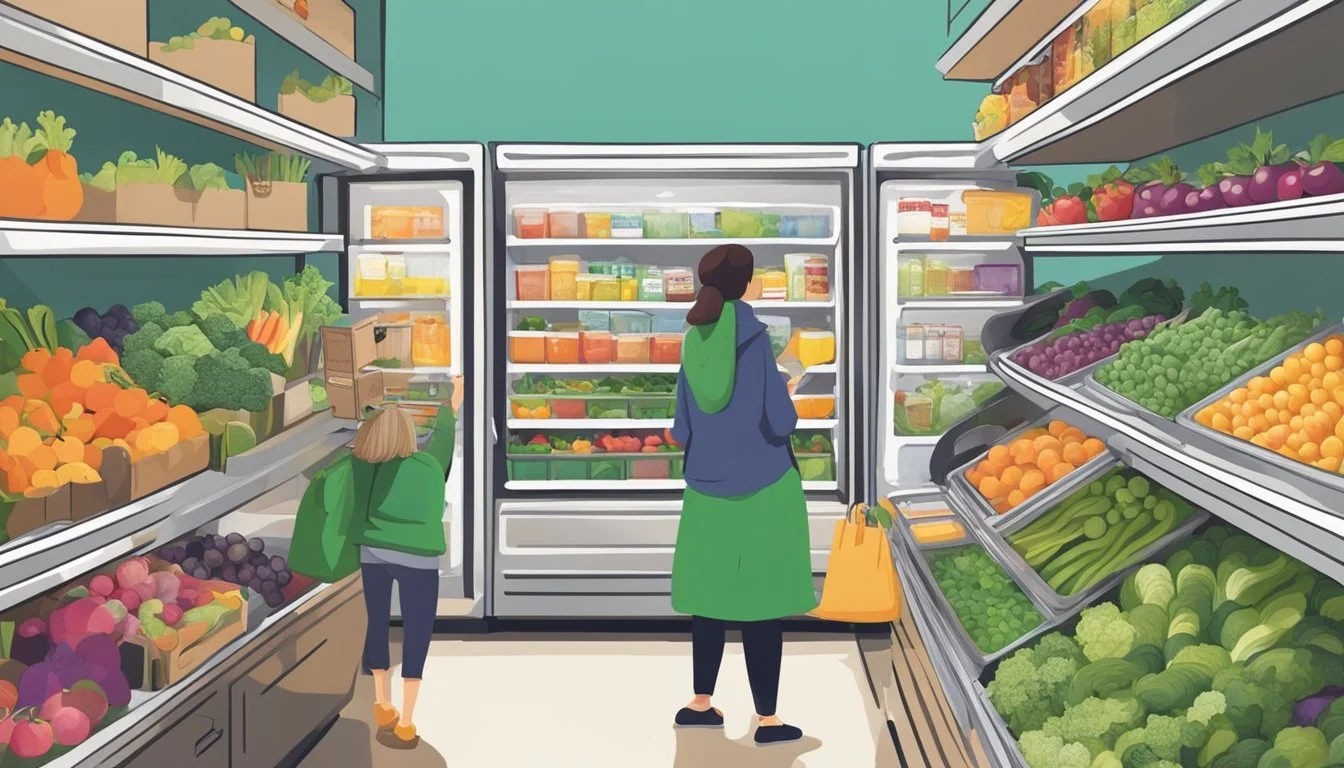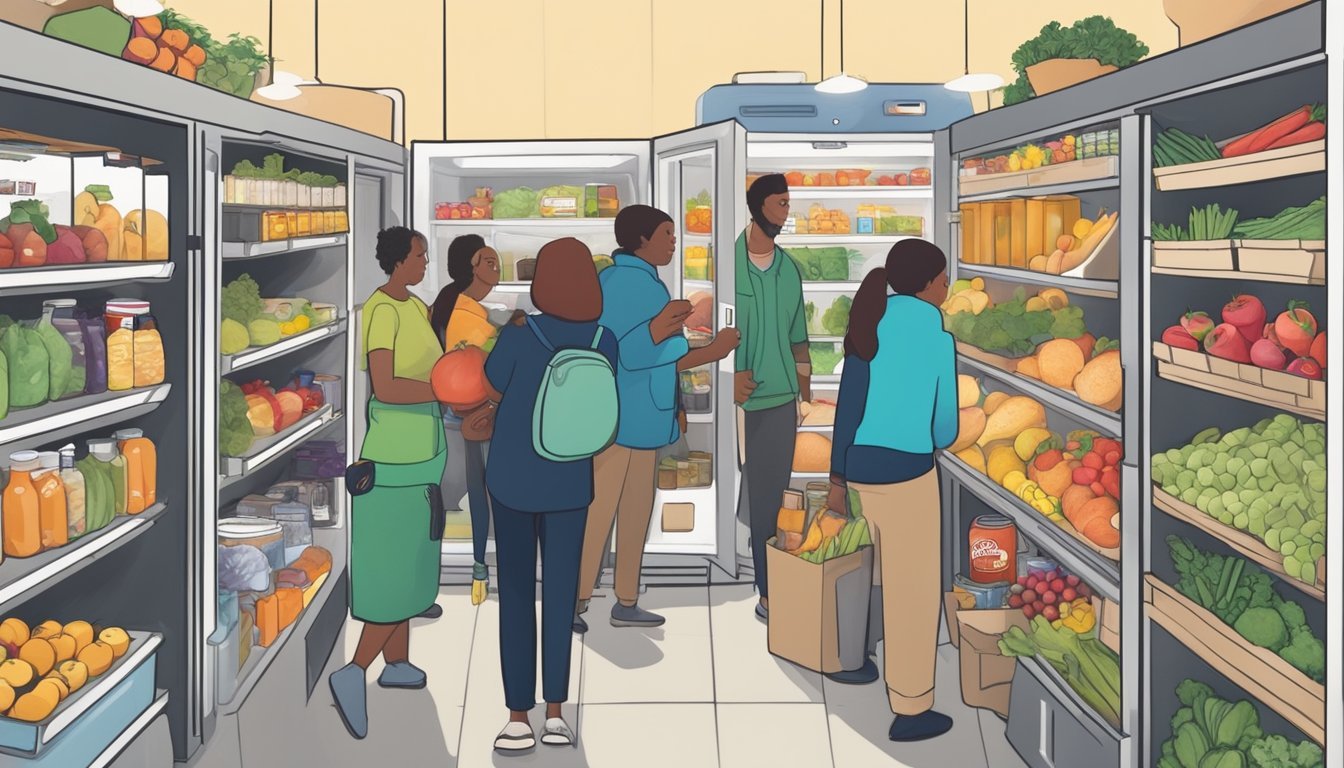Carmel, IN Community Fridge
Nourishing the Neighborhood with Shared Resources
In Carmel, Indiana, the concept of community support manifests tangibly through the local community fridge. Nestled in the heart of the town, the Carmel Community Fridge serves as a beacon of mutual aid, providing free food to those in need. It operates on a fundamental principle of taking what you need and giving what you can, thus fostering a sense of community solidarity.
This fridge is an essential resource for many residents of Carmel, where they can access fresh produce and other staples without the constraints of cost. The simplicity of the concept belies its profound impact: anyone can drop off excess food or pick up items as necessary, no questions asked. It’s not only a place to find a meal but also a spot where neighbors meet and connect, reinforcing the fabric of the local community.
Through the efficient and discreet support that the Carmel Community Fridge offers, it addresses food insecurity in a direct and community-driven manner. By creating an informal sharing economy, the fridge encourages a sustainable approach to food distribution and consumption while embodying the caring spirit of Carmel.
Overview of Community Fridges
Community fridges are one of the innovative solutions to food waste and food insecurity, providing access to free food for those in need. Operated by a variety of sponsors, including community groups, they offer a friendly approach to sharing resources.
History and Origin of Community Fridges
Community fridges, sometimes known as "freedges" or "friendly fridges," began appearing as a grassroots effort to tackle food waste and hunger. These public refrigerators allow individuals and businesses to share surplus food with others in their community. The concept has rapidly spread across the globe, with an increasing number popping up in urban and residential neighborhoods to provide free access to food.
Impact of Community Fridges on Food Security
Community fridges directly address food insecurity by offering a readily available supply of food. They are a testament to community solidarity, often stocked by local donations and maintained by volunteers. Beneficial effects include:
Reducing food waste: By allowing people to donate surplus food, community fridges help utilize food that would otherwise go to waste.
Alleviating hunger: They provide a discreet way for individuals struggling with food insecurity to access food without the stigma associated with traditional food aid programs.
The Role of Community Fridges During the Pandemic
In Carmel, Indiana, the advent of the community fridge became an essential resource amidst the challenges of the COVID-19 pandemic.
Response to Covid-19 Pandemic
Community fridges in Carmel responded swiftly as the coronavirus pandemic imposed economic strain and food insecurity on many residents. Local organizers recognized an urgent need for accessible food supplies, particularly when disruptions in supply chains and employment became widespread. The fridge, often stocked by community members and local businesses, offered free food without the barriers that traditional food aid programs might entail.
Accessibility: The fridge was located in a public space, making it easily accessible to all residents in need, 24/7.
Food security: By providing perishable and non-perishable goods, it helped address immediate food scarcity issues exacerbated by the pandemic.
Community solidarity: The fridge fostered a sense of togetherness, as community members supported each other in a time of crisis.
The community fridge in Carmel, therefore, served as a testament to the city's resilience and collective action during the unprecedented times of the COVID-19 pandemic.
Operating a Community Fridge
When operating a community fridge, several factors including location, food safety, and resource management are critical for successful and sustainable operations.
Location and Accessibility
A strategic location is vital for a community fridge's success. It ought to be easily accessible to those in need while ensuring it’s visible and convenient for contributors. Optimal spots include central areas in Carmel, IN, such as near community centers or transit hubs, to allow for easy foot traffic and broaden its reach to more community members.
Visibility: Highly visible to passersby
Safety: Situated in a safe and well-lit area
Convenience: Accessible 24/7 to both donors and recipients
Food Safety and Guidelines
Maintaining a community fridge requires adherence to food safety standards to ensure the health of its users. Guidelines should be visible on the refrigerator, outlining what can be donated (typically non-perishables and fresh produce) and how to handle the food properly.
Permitted Items: Fresh fruits, vegetables, sealed packages
Prohibited Items: Opened containers, homemade meals, expired goods
Maintenance: Regular cleaning schedules and quality checks
Managing Electricity and Resources
Operating a community fridge incurs costs, particularly in terms of electricity and resources necessary to keep the fridge running efficiently. The use of energy-efficient appliances can help to reduce costs, while community support in the form of donations or volunteer work can sustain the fridge’s operations.
Energy Efficiency: Use of a fridge rated for low energy consumption
Cost Management: Tracking and managing electricity bills
Community Support: Engaging local sponsors and volunteers for resources
Proper management ensures the community fridge in Carmel, IN, serves as a sustainable resource for those in need.
Contributing to Community Fridges
Community Fridges in Carmel, IN, rely on the active participation of volunteers and the generosity of local donors, including individuals and businesses. They provide an opportunity for the community to contribute to reducing food waste while helping those in need.
Volunteer Participation
Volunteers play a crucial role in the functioning of community fridges. They are responsible for organizing the fridge, ensuring it is clean, and monitoring the quality of donated items. Interested individuals in Carmel can join the effort by signing up through local community centers or directly at the fridge locations.
Tasks for Volunteers:
Monitor and maintain cleanliness
Check and manage food safety
Organize food in the fridge
Local Community Centers Contact Info:
Community Center Address Phone Number Carmel Area Community Center 123 Community Ln, Carmel, IN (317) 123-4567 North Carmel Social Service 456 North St, Carmel, IN (317) 890-1234
Donation Guidelines
Donations should be fresh and safe for consumption. Non-perishable items are also welcome. Donors in Carmel should follow the fridge's specific guidelines, typically available at the fridge site or through community centers.
Acceptable Items:
Fresh fruits and vegetables
Sealed packaged foods
Baked goods from bakeries
Prohibited Items:
Expired or spoiled food
Opened packages
Alcoholic beverages
Collaboration with Local Businesses
Community fridges often collaborate with local businesses like supermarkets and bakeries to reduce waste and provide a wider range of donations. Businesses in Carmel can support community fridges by setting regular donation schedules or providing surplus food items that would otherwise go to waste.
Business Support Examples:
Day-old bread from bakeries
Seasonal produce from supermarkets
Surplus non-perishable items
Local Businesses Contributing to Community Fridges:
Business Name Type Contact Carmel Fresh Bakery Bakery Carmel Fresh Bakery Info Harvest Supermarket Supermarket (317) 567-8910
Community Fridge Initiatives and Programs
Community fridges in Carmel, IN are supported through diverse collaborative efforts. These initiatives work synergistically to address food insecurity and promote community engagement.
Mutual Aid and Nonprofit Partnerships
Mutual aid groups and nonprofits play a pivotal role by establishing and maintaining community refrigerators. Their partnerships often involve food procurement, fridge management, and volunteer coordination. For instance, mutual aid groups may collaborate with food banks, like Second Helpings, to stock and distribute food efficiently. Such partnerships are strengthened by incentives like the Supplemental Nutrition Assistance Program (SNAP) to ensure accessibility for low-income families.
University and School Programs
University and school programs contribute significantly to the sustenance of community fridges. Students and faculty may organize food drives and educational campaigns about food waste and food security. For example, universities like the Indiana University–Purdue University Indianapolis (IUPUI) might engage in research projects aiming to optimize food distribution and health outcomes, integrating academic insights with practical community service.
Government and Policy Support
The involvement of local government can ensure long-term viability of community fridge programs. Policies that support food donation and reduce liability for food donors are essential. In Carmel, local ordinances may facilitate the placement of community fridges in public spaces, while government grants can provide financial support. Initiatives may also coordinate with the Department of Health to ensure food safety standards are met, safeguarding public health while fostering community resilience.
Advancements in Community Fridge Movement
As the community fridge movement in Carmel, IN evolves, it is leveraging advancements in technology, securing diverse funding sources, and forming robust networks to sustain and scale its impact.
Technology and Social Media
Technology and social media have become pivotal in enhancing the reach and efficiency of community fridges. Organizers in Carmel use social media platforms like Facebook and Instagram to raise awareness, coordinate donations, and mobilize volunteers efficiently. They employ digital tools for inventory management, ensuring fridges are stocked with fresh and varied food options. These platforms provide a real-time connection between community members and the fridge locations.
Expansion and Funding Opportunities
Expansion initiatives for community fridges have gained momentum thanks to a variety of funding sources. Local Carmel initiatives often utilize crowdfunding platforms such as GoFundMe, Venmo, and CashApp to receive community donations. This diverse funding approach allows for rapid response to the community's needs and covers costs for refrigerator maintenance, electricity, and food purchases. Grants and local business sponsorships further bolster these funding efforts.
Community Fridge Networks and Platforms
The creation of community fridge networks and platforms is a noteworthy advancement. Carmel's initiative is connected with broader networks that share best practices and resources, ensuring sustained impact. Furthermore, digital platforms like ChangeX have been instrumental in helping new fridge projects get off the ground by providing information, toolkits, and access to funding. These platforms have empowered residents in Carmel to join a growing collective endeavor to combat food insecurity.
Addressing Challenges and Sustainability
Carmel, IN, has made significant strides in addressing food waste and supporting its vulnerable populations. This section examines the strategies Carmel employs to combat environmental impact while providing a safety net for those in need.
Combating Food Waste and Environmental Impact
Food waste is a major contributor to landfill growth, and subsequently to climate change, due to the production of greenhouse gas emissions. Carmel's Community Fridge initiative directly reduces food waste by recovering excess edible food that would otherwise end up in landfills. This aligns with broader zero waste goals which aim not just to manage, but to systematically avoid waste. By facilitating the redistribution of surplus food, the Community Fridge helps to close the loop in the local food system, making it both more sustainable and resilient.
Support for Vulnerable Populations
The Community Fridge in Carmel serves as a critical resource for vulnerable populations, including undocumented residents who may face barriers when accessing traditional food aid programs. The fridge operates on a take-what-you-need, leave-what-you-can principle, ensuring 24/7 access to nutritious food with no questions asked. This anonymity and availability are crucial in creating an inclusive safety net for all community members. Their approach fosters a sense of belonging and community care, which is especially important for those who are at risk of food insecurity.
Success Stories and Case Studies
This section delves into how community fridges, often referred to as 'freedges', have brought about positive changes in various cities and how local organizations have played pivotal roles in their success.
The Impact of Freedges in Major Cities
Community fridges have become a significant asset to cities like New York City and Miami, offering accessible food resources to the public. In the Bronx and Manhattan, freedges have provided relief to those in need, particularly during challenging times like the pandemic. The growth of these communal resources in bustling urban environments underscores their effectiveness in addressing food insecurity. Through freedges, residents can leave or take food as needed, exemplifying a practical approach to mutual aid.
New York City: The introduction of community fridges has turned many neighborhood corners into hubs of sharing and caring.
Miami: Grassroots efforts have led to the proliferation of freedges, making free food accessible while fostering community connections.
Community Empowerment through Refrigerator Hosts
The role of hosts, who are responsible for the maintenance and coordination of the community fridges, has been central to their success. Grassroots Grocery, for example, has demonstrated the power of local entities in fostering community ties and ensuring the sustainability of these resources. Individuals such as Eric Von Haynes in Carmel, IN, have played an instrumental role by championing the cause and inspiring others to participate in this community-led initiative.
Grassroots Grocery: This entity serves as a model for how localized efforts can create ripple effects in a community's well-being.
Eric Von Haynes: His commitment to the community fridge in Carmel has not only alleviated hunger but also built a sense of ownership and pride among local residents.
How to Start a Community Fridge
Starting a community fridge in Carmel, IN, involves careful planning, collaboration, and community engagement. One needs to establish a dedicated team, define operational processes, and actively seek out partnerships and resources.
Steps and Best Practices
Formulate a Clear Plan: Begin by assessing the need for a community fridge in the area and identify a suitable, easily-accessible location. The plan should detail food safety protocols, fridge maintenance, and operational guidelines.
Identify a Location: Secure a visible and accessible spot for the community fridge.
Source a Fridge: Reach out for donations of a secondhand fridge or consider purchasing one.
Establish Rules & Guidelines: Define what items can be shared and set up a cleaning and maintenance schedule.
Compliance with Laws: Make sure the community fridge operates in line with local health and safety regulations.
Building a Team and Engaging the Community
Assemble a Team: Establish a focused group of individuals dedicated to managing the community fridge. Assign roles for maintenance, stocking, and communication.
Recruit Volunteers: Gather community members who are passionate about reducing waste and helping others.
Roles and Responsibilities: Define tasks including stocking the fridge, maintaining cleanliness, and engaging with the wider community.
Community Involvement: Promoting the fridge through community events and collaborations strengthens communal bonds and secures the fridge's sustainability.
Launch Event: Host an event to introduce the fridge to the community.
Regular Communication: Use social media and local networks to update on the fridge's status and needs.
Tools and Resources: Utilize a digital toolkit for templates and guidance on best practices for operations and community engagement.
Conclusion
Carmel, Indiana's approach to addressing food insecurity through the community fridge initiative reflects a strong sense of solidarity among its residents. This program demonstrates a practical application of compassion within the community. With the momentum gained from successful sustainability efforts, Carmel has harnessed local involvement to provide accessible food distribution.
The community fridge serves as a hub where any individual can contribute or take what they need, ensuring that surplus food reaches those who may be facing challenges with food scarcity. Such initiatives are typically spearheaded by community groups or individual volunteers who are committed to making a difference in their neighborhoods.
Noteworthy points include:
The fridge operates on a take-what-you-need, leave-what-you-can philosophy.
It symbolizes a collective effort to reduce waste and support neighbors.
It enhances the existing framework of food distribution and resource sharing.
This model exhibits a neutral and clear path forward for other communities looking to emulate such socially responsible programs. The community fridge in Carmel stands as an extension of the city's ongoing commitment to sustainability, reflecting a responsible and knowledgeable response to local needs. It exemplifies how individual and group actions can coalesce to form a resilient community support system.

